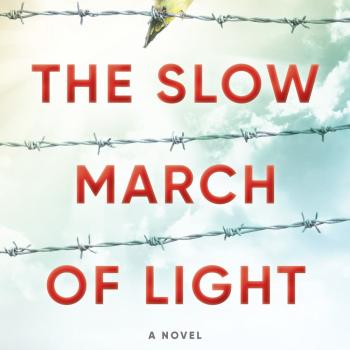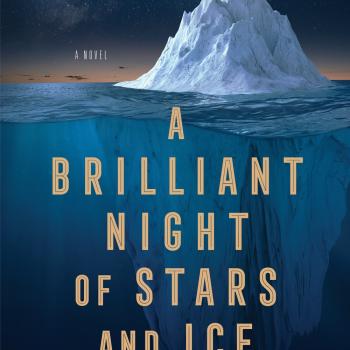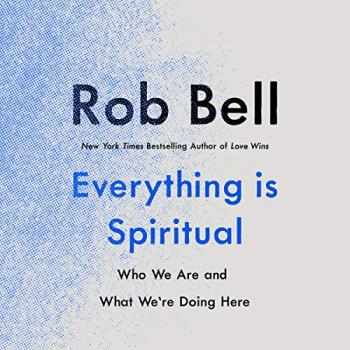 When Clay Morgan was four years old, he was accidentally abandoned by his family at a funeral home.
When Clay Morgan was four years old, he was accidentally abandoned by his family at a funeral home.
I’m not saying that shaped his life, but I do know that when he was four years old, Stephen King saw a playmate get hit by a freight train, and he has had a bit of an obsession ever since. And I do know that Clay Morgan has written an insightful, funny, and inspiring book called Undead: Revived, Resuscitated, Reborn about death, life after death, our fear of death, and possibly, our spiritual death.
So as we say at my house, maybe yes, maybe no.
But in any case, Mr. Morgan’s book is about our obsession with death, about the wave of undead monsters and characters in our culture in recent years, and about what the Bible might have to say about life after death — and about people being brought back to life.
Preferably without bandages or appendages trailing behind them.
As a historian and a pop culture junkie, Mr. Morgan is working in my usual neighborhood. Historians and cultural critics alike try to understand and account for the elements of culture, although historians typically have the luxury of, well, history, and Mr. Morgan takes advantage of that by looking at a number of texts, from ancient to recent. His conclusions about our fascination with the undead match mine (full disclosure: I’m currently working on a new book on the afterlife and after life in literature and culture), and we agree that we are seeing our personal and cultural tensions worked out through zombies, mummies, vampires, et. al., as well as finding ways in the midst of this unsettling focus on death to move forward in life.
Take, for example, Mr. Morgan’s thoughts on some ancient cultural representations of death: “Whether physical or spiritual, death isn’t something we like to remember. We should remember that one of the main reasons for creating death masks was so portraits or statues could be accurately created later on. The disturbing memory of death was used to create a legacy of life.” (35)
That’s precisely what Mr. Morgan is doing here in his exploration of our cultural representations — finding ways that these freaky dead or undead situations allow us to understand life better — including the also freaky instances of characters raised from the dead in the Bible. It all becomes a part of a larger conversation between culture and theology.
In mining the dead and the undead for meaning, Undead isn’t off the beaten track. Others have thought about these things a bit. The late Sam Kinison, comedian and former Pentecostal preacher did a riotous and certainly sacrilegious routine built around the Resurrection: “Jesus is the only guy that ever came back from the dead that didn’t scare the $#&% out of everybody! He’s the only guy that ever crawled out of a grave where people didn’t go, ‘Oh — OOOHHHH!!! I JUST SAW SOME %$#@&* CRAWL OUT OF HIS GRAVE! I DON’T BELIEVE I’M SEEIN’ THIS $%&#!”
When I first watched Mr. Kinison do this routine on HBO a million years ago, I laughed — and I wondered. What does it mean that this is a part of our faith tradition?
What are we supposed to learn from this radical and maybe even ridiculous belief?
Here at this intersection between story and meaning may be where Undead is most valuable. Mr. Morgan takes on these individual supernatural stories one by one, parses them for spiritual meaning, and cracks open a new way of thinking for us. The book is funny — like Mr. Kinison, Mr. Morgan has a great style and a real sense of comic timing — but Undead is also powerful and spiritually acute. Take one example — in regard to Jesus raising the widow’s son, literally stopping the funeral procession:
Soon afterwards he went to a town called Nain, and his disciples and a large crowd went with him.
As he approached the gate of the town, a man who had died was being carried out. He was his mother’s only son, and she was a widow; and with her was a large crowd from the town.
When the Lord saw her, he had compassion for her and said to her, “Do not weep.”
Then he came forward and touched the bier, and the bearers stood still. And he said, “Young man, I say to you, rise!”
The dead man sat up and began to speak, and Jesus gave him to his mother.
Fear seized all of them; and they glorified God, saying, “A great prophet has risen among us!” and “God has looked favorably on his people!”
This word about him spread throughout Judea and all the surrounding country. (Luke 7: 11-17, NRSV)
Mr. Morgan puts to work a teaching by Louie Giglio (who used to lead a wildly popular Bible study attended by many of my students at Baylor University):
[Louie] said we don’t know how close they were to the place of the young man’s burial, but he was about to be thrown into a hole, dead and buried. Louie says that a lot of us are spiritually on a stretcher being carried out of town. We allow things in our lives that are killing our connection to God, and it’s almost over for us. We’re so dead that we can’t help ourselves at all. But just then Jesus intersects our lives, reaches out to us, and says, “Stop. There’s not going to be a funeral here today.
I love that God is a funeral crasher. (51)
For Mr. Morgan, what we need to understand from these stories of the strange and the supernatural is that the God of Life loves us. And what we need to remember, he says, is that through Christ, death is dead.
So get a healthy scare from the undead in our culture, and shiver at the strangeness of the stories in the Bible.
But don’t be frightened about what happens next. Because as Mr. Morgan says, “Without death to fear, we are truly free to live.” (184)
Like the undead — and the newly baptized — we can be raised to walk in newness of life, doing the things we are called to do without fear of what might happen to us.













